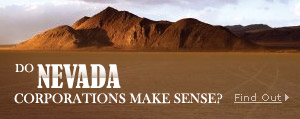Asset Protection Privacy
The Right to Privacy is always an issue in law because there is no specific amendment to �The Right to Privacy� in the US Constitution or The Bill of Rights. The Rights to Privacy derive from common law and are sited by precedence from different cases and statutes.
The Right to Privacy in asset protection planning falls into the same situation. There is no ultimate right to total privacy or the right to not report income and assets. Most governments and statues offer options within these legal boundaries. With a well-designed plan, one can find privacy.
Think of it like this. A house may have a front door and a back door. The front door is visible to all the neighbors when compared to the back door. You enter the front door, all the neighbors know. When you enter the back door, quietly and without commotion, very few people know. Either way, you have arrived at the same destination inside the house.
You can report your assets personally (the front door) or report your assets through a corporation or LLC (the back door). Regardless, you have reported your assets. This privacy is rooted in the amendments that bar double taxation. Though asset protection plans are not for the purpose of reducing taxation, sound asset protection plan designs take advantage of these pathways for your assets. They don�t necessarily hide them; asset protection devises the routes of ownership (title) and control, placing them on separate pathways. This in itself creates privacy.
With rampant identity theft, and criminal schemes such as "phishing" and "pharming", it makes sense to keep your valuable assets away from your personal name or from being reported under your social security number or any other easily traced identifier.
When assets are transferred into a trust or a business entity, the assets are no longer held or reported in an individual person�s name. Therefore, with such asset protection privacy, it is much more difficult for criminals to either find or access account information or the assets themselves. Even if the individual�s identity is compromised and their accounts are accessed, the assets that are held in entities should be unaffected and therefore available for transfer to the individual�s new accounts for bill payment, etc., while the identity theft is being resolved.
Common sense would guide anyone to the notion that there is protection in privacy and that there is vulnerability with exposure; because we can�t limit all of our exposures, we should guard our privacy.

ABOUT THE COMPANY
- About Our Firm
- Trustmakers Sitemap
- Mission Statement
- Panama Comfort Zone
- Asset Protection Newsletters
- Asset Protection Trust
- Family Trust
- Virtual Tour
- ASSET PROTECTION PRIVACY
- Contact Us
- Contributors
- FAQs
- Home Equity Acceleration Plan
- Author News
- Asset Protection Misconceptions
- Asset Protection News
- Asset Protection Trust.02 12 13
- Dynasty Trust The Basics
- Resources
- Asset Protection Affliates
- Asset Protection Facts
- Asset Protection Calm
- Home Protection
- OVERVIEW
- Privacy Policy
- Author Newsletter
- Newsletter
- Asset Protection Trust Services
- Asset Protection Strategy
- Offshore Investing
- Disclaimer
- Rob Lambert
- Panama Canal Zone
- Asset Protection Consultation
- TrustMakers Forms Center
- TrustMakers Site Map

EDUCATION PRODUCTS

Asset Protecion Training
If you are looking for the most important concepts in Asset Protection, this is where to start! If you need to talk intelligently about protecting your net worth or you are a professional this online training program is for you!

Free Asset Protecion Course
Get our Free Online Asset Protection Video Course.
Learn how to protect yourself like the pros!


Asset Protection in a Nutshell
Clear, concise and straight forward, this e-Book will help you make sound decisions with your business and personal assets..

Protecting Assets - 70+ Video Lessons + 3 Ebooks
This e-course will give you straight forward asset protection advice you can implement now. One of the best asset protection courses available! Includes 70+ video lessons, 3 Ebooks, and 6 example legal documents!

Advanced Estate Planner
The key to a solid Asset Protection Plan is the Estate Plan. This downloadable estate organizer will help you keep track of important information about your assets and important legal documents all in one place.
















